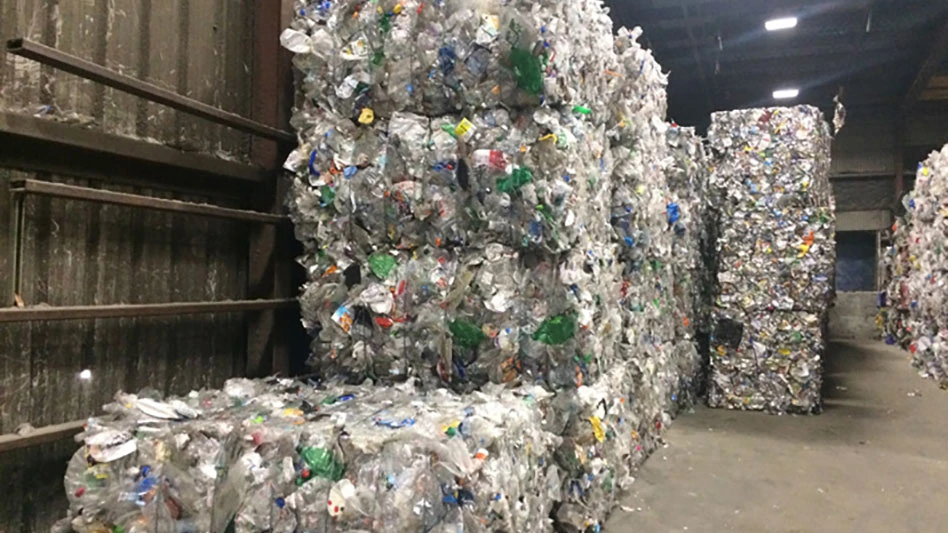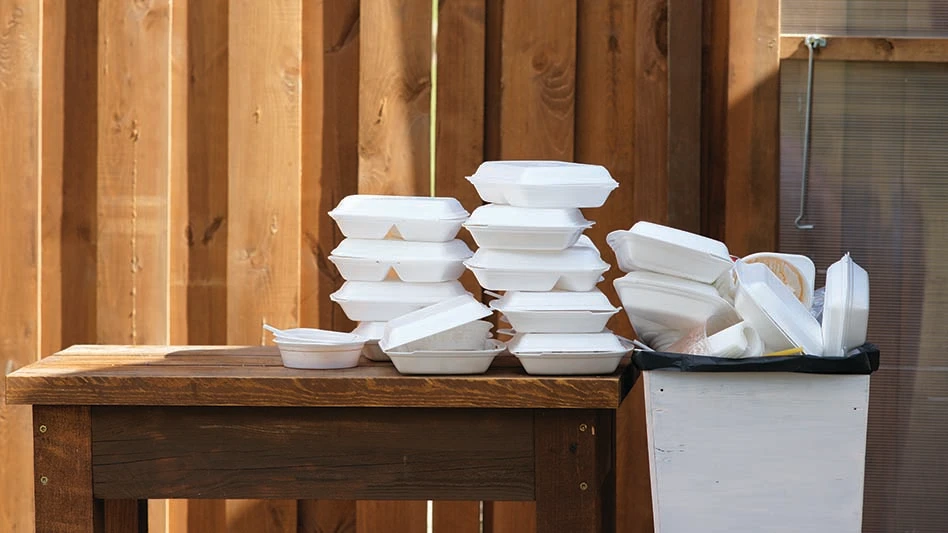Elvis has left the building. In this case, he left it in 1953 with a high school diploma in his hand.
The building in question is Ellis Auditorium in Memphis, Tenn., and Elvis Presley returned to perform there several times after his 1953 Humes High School graduation ceremony took place at the auditorium.
Earlier this year, when it became time for the auditorium to make way for an expanded Memphis Cook Convention Center, the demolition contractor involved did more than just devise a demolition plan.
Eagle Amalgamated Services, Gibsonton, Fla., worked with marketing and public relations consultant Jack Fleck of P.R.&T. Media Group, Clearwater, Fla., to maximize the publicity and marketing value of the auditorium that carried a significant performing arts history.
It is not the first time that Eagle Amalgamated and Fleck have teamed up for a high-profile project. Eagle was also the winning bidder for the demolition of the "Big Sombrero," as the former Houlihan’s Stadium in Tampa, Fla., was known.
The high-profile auctioning of stadium parts and components was the first step toward a 90% recycling rate for that demolition project, according to Eagle Amalgamated Services president Robert Vincent (R.V.) Shulnburg.
RECYCLING ROOTS
R.V. Shulnburg is not a demolition contractor who discovered recycling on the job. His roots in recycling go back to the late 1960s, when he and his wife Nancy formed Shulnburg Recycling Inc., a scrap metal processing company. "We’re in the ferrous and nonferrous scrap metal business with facilities in Gibsonton and Brooksville, Fla.," says Shulnburg of his original company.
"In 1981, Eagle Amalgamated Services, based in Gibsonton, was formed by myself and Frank Redmond," says Shulnburg. "It was a commercial demolition business designed in part so we could attain more scrap metal and offer the customer assurances that everything possible would be recycled rather than going into a landfill."
Four years after the company was founded, the decision was made to also offer asbestos abatement, "to offer the customer one source of responsibility," says Shulnburg. "We can remove the asbestos or the lead-based paint, demolish the building and recycle as much as possible, reducing the loads that had to go to the landfill. That gives the customer the best prices possible," he remarks.
Eagle Amalgamated has grown steadily and built a project list that has included sugar mills, cement plants, attractions at Walt Disney World and Busch Gardens, and buildings and bridges in cities such as Miami, Tampa, Jacksonville, Savannah, Ga., and Biloxi, Miss.
Eagle is now owned by Frank and Margaret Redmond and Shulnburg’s daughter, Pamela Ann Shulnburg Hinson. According to R.V., they share the same interest in making sure recycling remains a key component of the business.
COMMUNITY INVOLVEMENT
Through no fault of there own, demolition contractors can sometimes be perceived as the villains—the guys with the wrecking balls taking down a piece of local history. At times, the publicity associated with a given project may be less than positive.
Eagle Amalgamated has faced potentially similar circumstances with some of its projects, including the auditorium in Memphis and Houlihan’s Stadium in Tampa. Rather than shy away from publicity, however, the company chose instead to work with Jack Fleck and P.R.&T. Media Group to maximize community involvement in the dismantling and demolition projects.
Several events were organized in coordination with the stadium project, ranging from auctions to police S.W.A.T. team exercises.
Portions of the stadium’s field lighting were donated to organizations such as inner city baseball leagues operated by the Gary Sheffield Foundation. Stadium turf was also donated to a youth soccer association for use at three new fields at a Tampa area middle school.
An auction was held in December of 1998 to sell off items to both Tampa Bay Buccaneers fans and professional wholesalers. Items ranging from the "Positively No Visitors" sign hanging over the entrance to the Buccaneers’ locker room to bar stools and aluminum benches were purchased by auction attendees.
Before the stadium was taken down, Eagle Amalgamated offered an opportunity for local police S.W.A.T. teams to conduct drills at the facility. The Tampa Police Department’s 20-member S.W.A.T. team blew down some 50 doors with explosives and brought in an armored personnel carrier as part of its exercises at the facility.
After the stadium consisted of more rubble than standing structures, fire department rescue personnel and dogs had a chance to conduct mock rescue drills.
Eagle even garnered some publicity for its decision to hire a pest control company that used humane ways to evict some 6,000 to 10,000 bats living at the old stadium before their roosts turned to rubble.
An effort was also made to raise funds and use the stadium’s pillars and pilings to create a new reef in Tampa Bay, but eventually the concrete was recycled in the more conventional manner.
To cap off the publicity surrounding the stadium project, a raffle was held to benefit All Children’s Hospital in St. Petersburg, Fla., with the winner having the opportunity to blow up the last standing portion of the stadium—the 210-foot-high luxury boxes.
R.V. Shulnburg says such events are part of "cementing a relationship with the community. Allowing the local police and fire departments to have a place to work creates a good giving back to the community attitude. That is very crucial."
Eagle now faces some of the same opportunities in Memphis with Ellis Auditorium. Items perceived as collectibles will be auctioned off, while small square portions of the stage floor are being mounted on plaques for sale to Elvis fans.
Portions of the auditorium will be incorporated into the design of a new $79 million performing arts center that will rise in place of Ellis Auditorium. But there will still be items on sale with a connection not only to Elvis, but also to a host of 20th century personalities who made appearances at the building, ranging from John Philip Sousa to Bruce Springsteen.
MORE THAN JUST THE HIGH PROFILE . . .
Beyond the higher-profile auctions and donations, Eagle engages in the more conventional recycling methods to handle the majority of the materials stream.
With their scrap metal roots, the officers of Eagle Amalgamated are well aware of the value of the metals encountered in their projects. On many local projects, Eagle works in tandem with Shulnburg Recycling to process metals. "If it’s logically feasible, the two companies work together," says R.V. "We have shears and balers at the scrap yards." Beyond the Tampa market, arrangements are made with nearby scrap recycling companies.
Concrete recycling has become just as much a standard procedure, according to R.V., who notes that Eagle has a long-standing relationship with Angelo Iafrate Inc., of Warren, Mich., a national contractor that brings portable crushing equipment to concrete-bearing Eagle job sites.
"We feel that concrete recycling is absolutely the way of the future," says R.V. "We know it’s going to become more and more prevalent." Eagle owns and operates pulverizers and portable shears that prep the concrete materials for Iafrate’s equipment.
He points to the Tampa market as one where there is a strong demand for the crushed concrete. "It is absolutely a good market," R.V. remarks. "The material is in demand. We had more inquiries for the product coming out of the stadium than we had materials available," he adds.
"The nearest quarry to Tampa is 50 miles away," R.V. notes. "As with most natural resources, you just can’t replenish a quarry—it’s impossible. Recycling’s going to get bigger and bigger."
Product crushed by Iafrate for Eagle "often goes back for base material on the same project," says R.V., "or it goes into a road building base. It works better than conventional lime rock, because it has better compaction and moisture actually hardens it up, and allows it to be worked right away, unlike lime," he comments.
As demonstrated by their auctions, Eagle Amalgamated is also willing to explore re-use options when tackling a demolition project. "We’re always re-selling equipment, machinery and other contents of a building," says R.V.
In the case of the stadium in Tampa, plumbing fixtures such as sinks and urinals were purchased for re-use at auction, as were many aluminum benches. Ellis Auditorium is yielding a number of re-usable items, such as hardwood railings and banisters and exterior stonework located along rooflines and window frames. Decorative stone sections from along the roofline are scheduled to sell for $475 per piece.
Re-use opportunities are not limited to the high-profile projects. "We worked on a large facility for Continental Grain at the Port of Savannah that yielded a large amount of heart of pine that we were able to ship to mills for re-planing and re-sizing," says R.V.
ON THE RECYCLING TRACK TO STAY
Recycling and re-use has been an interwoven part of the way Eagle Amalgamated conducts business, and that is unlikely to change.
R.V. Shulnburg feels that much of the demolition industry has begun to look at materials recycling in the same way that his company has from the outset. "You couldn’t measure what goes on today compared to 15 years ago with concrete recycling," he notes.
The way buildings are taken down is being affected by the growth of demolition
debris recycling, he contends. "It used to be that you would knock everything down with a wrecking ball," says R.V. "Now it’s more common to use a backhoe and grapple and strategically lower it down to the ground. The idea or theory of getting a bigger hammer no longer applies in the demolition business with the shears and grapples and hammers that are on the market today."
Eagle continues to keep a close eye on recycling trends and the development of any new markets for materials. Its involvement in the environmental side of the industry can also lead it to a recycling opportunity. "We’ve gone to the point where all fluorescent tubing now goes into a controlled mercury removal plant," says R.V., "even down to the little mercury switches in the thermostats, which are taken out and properly handled."
According to R.V., the other, younger officers in charge of Eagle’s future are equally committed to recycling. "Pamela Ann was born and raised in the scrap metal business—she knows how to save and reuse everything," he says of his daughter, Pamela Ann Shulnburg Hinson.
He sees a bright future for the company. "Frank Redmond is in his 50s and Pam Hinson is in her mid-30s, so the company is poised to move forward with younger folks who also have a lot of experience in recycling and demolition."
R.V. sees a natural marriage between demolition and recycling, and has certainly had no difficulty combining the two processes into a profitable business model.
He has a philosophical approach regarding how the two industries go together, with a belief that both processes are ultimately beneficial to the environment. "The continual growth of the demolition business allows new buildings to be built on land that is already developed, rather than adding more concrete and asphalt to the countryside," R.V. states. "We’re recycling the use of the land." C&D
The author is editor of C&D Recycler.
Get curated news on YOUR industry.
Enter your email to receive our newsletters.

Explore the August 2001 Issue
Check out more from this issue and find your next story to read.
Latest from Recycling Today
- GFL opens new MRF in Edmonton, Alberta
- MTM Critical Metals secures supply agreement with Dynamic Lifecycle Innovations
- McClung-Logan Equipment Company joins Tana’s authorized dealer network
- Grede to close Alabama foundry
- Plastics Recycling Conference 2025: Working toward their targets
- SWACO rolls out new commercial recycling and food waste programming
- Updated: Matalco to close Canton, Ohio, plant
- Metso launches electric Anode Weighing and Casting Machine






